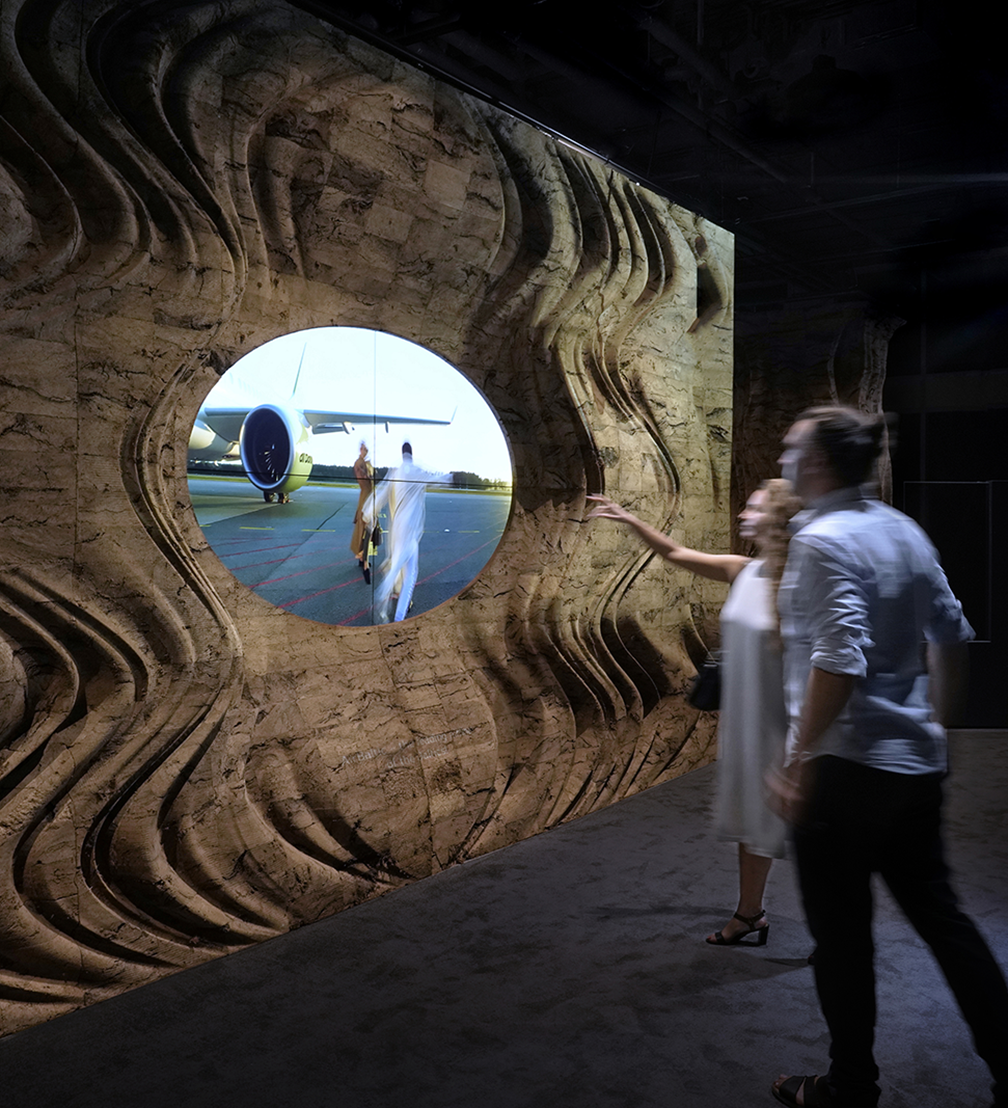
The exhibition Latvia — Soil for Innovation is designed as a symbiosis of the past and the future. Peat has been chosen as its main material, a canvas on which the story of Latvia is painted. The prehistoric material contains information about the history of Latvia, ancient plants, trees and people, while the modern technologies used in the exhibition allow to peek into the future.
The atmosphere of the Latvian Pavilion is mysterious and futuristic. Each visitor of the Pavilion experiences four dimensions of Latvia, created as multimedia stories in four different rooms, each using different digital technologies. The stories are derived from the main values of Latvia’s official image: Latvia — a land for experiments, a land for new discovery, a land for connectivity, a land for innovations.
The first room which reveals Latvia as a «soil for experiments», is the most spacious one. At its centre, there is a free-standing column made of peat, and the movement of visitors is organised around it. There are four transparent displays that with the help of video and audio introduce visitors to Latvia as a whole and Latvia as a country suitable for challenges.
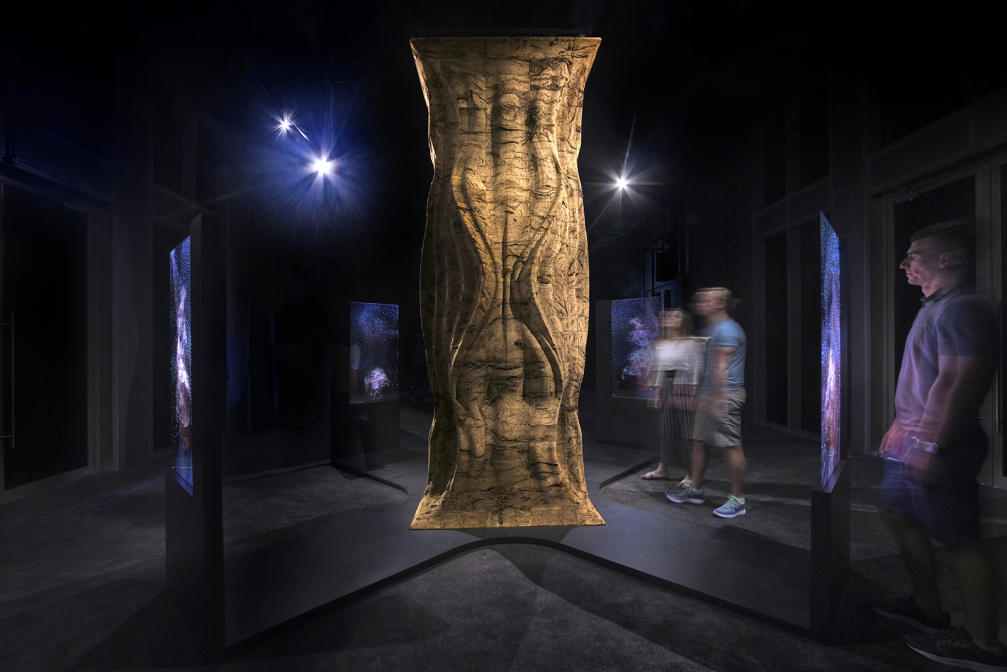
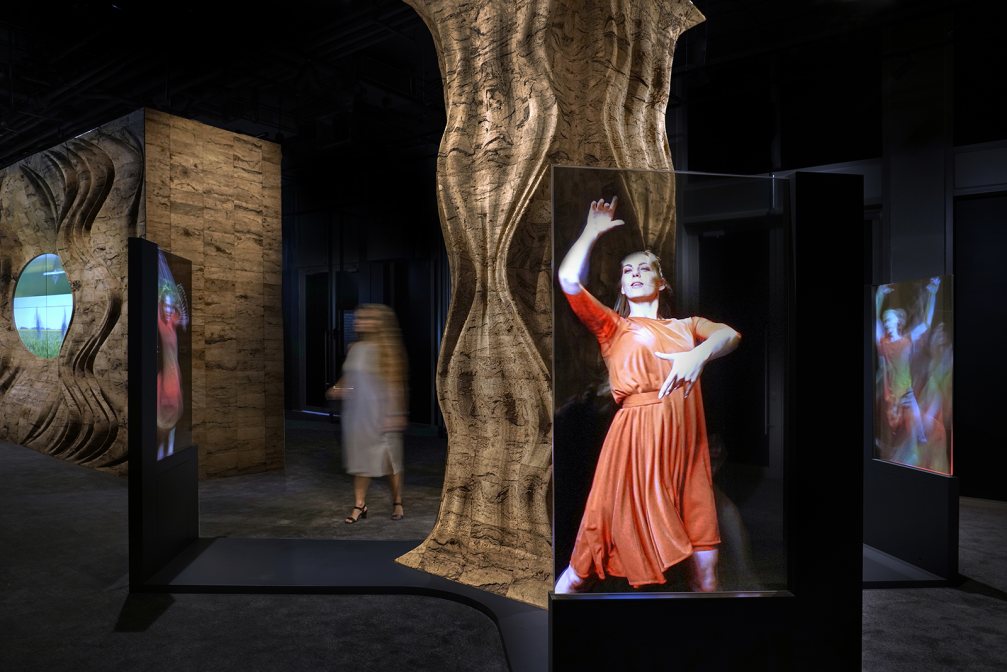
In the second room there is a peat wall, which can be viewed from two sides, thus the flow of visitors is divided here. In the centre of the wall are built-in screens on which a multimedia story and graphic elements are projected. In this space, Latvia is depicted as a land for new discoveries.
In the third room, four corner elements or peat sculptures have been created surrounding visitors from all sides. Here the visitor is located in the centre of the room and also in the centre of the story. Latvia is positioned as a country that connects different worlds, and this story is revealed to visitors with a 360-degree video projection.
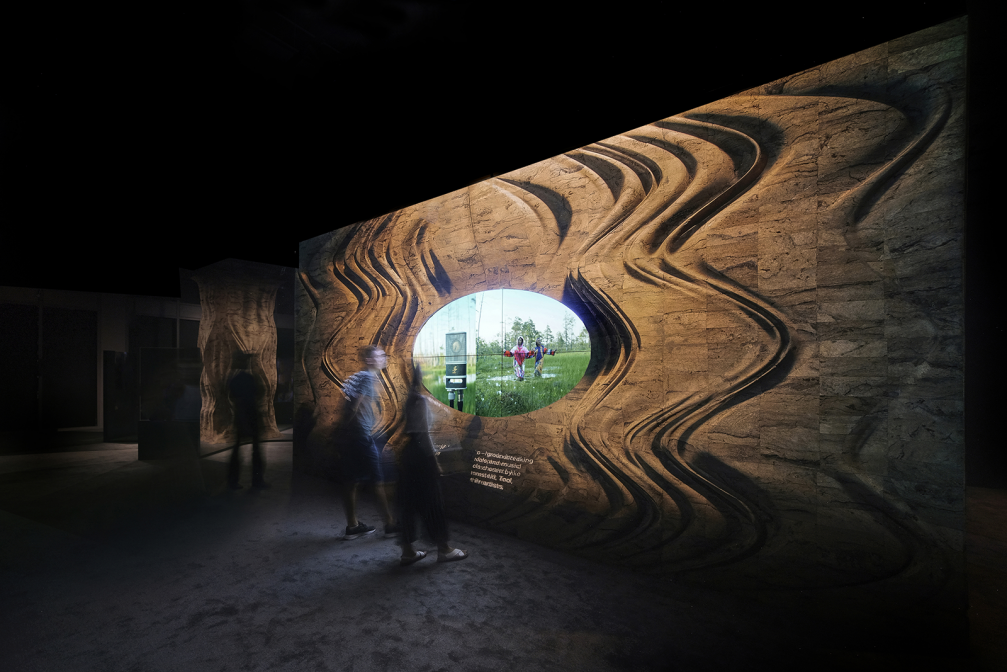
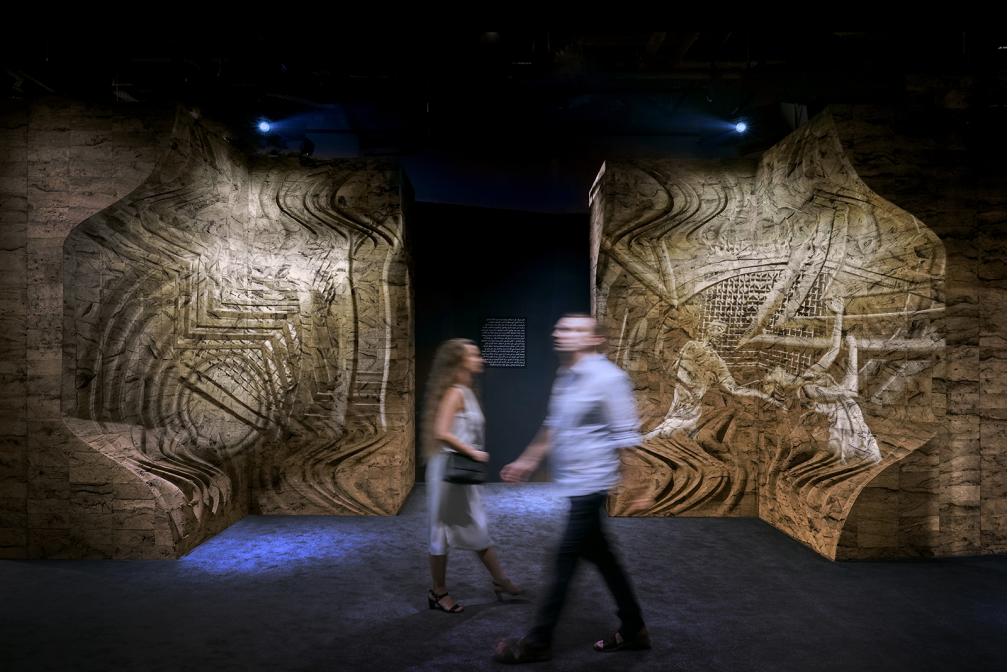
In the first three rooms, the person is an observer in an exhibition filled with content, whereas in the fourth room the visitors themselves become the content. Mirrors are placed radially around the perimeter of the room, and visitors see themselves in them. There is also a wide-angle camera that allows everyone to take photos of themselves. The exhibition has a symbolic meaning — it reminds us that at some point the passive observer must become the creator.
The exhibition is concluded by two LED stands placed at the exit of the Pavilion. In them, visitors can save the photos they just took and learn more about the Latvian Pavilion on the third floor, where entrepreneurs have exhibited their products and organise various events, as well as meet with potential business partners.
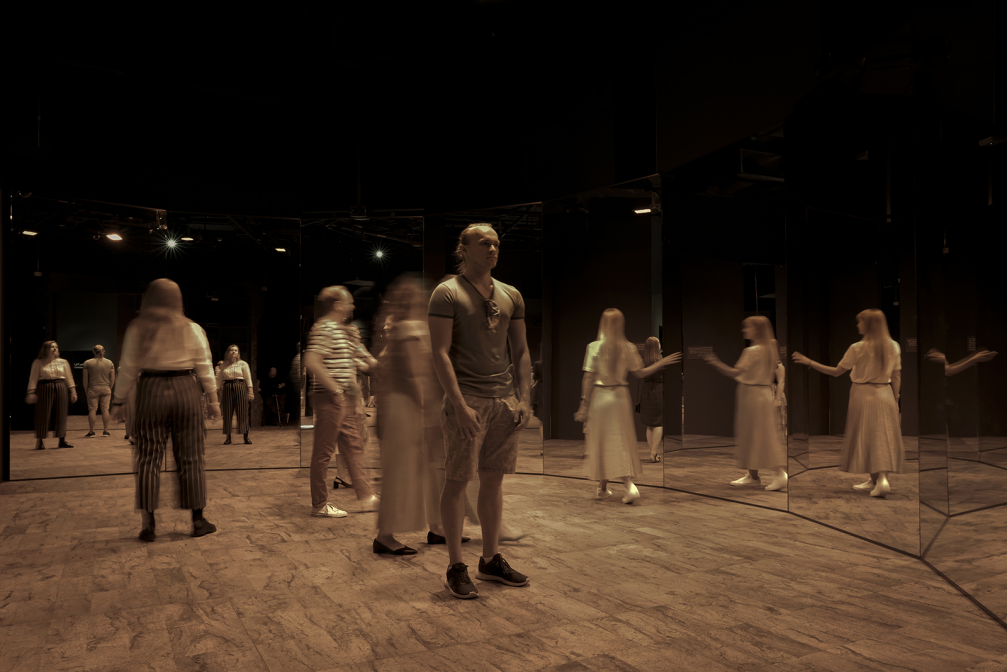
The Latvian exhibition for Expo 2020 has been created as an example of sustainable thinking, where ecological material coexists with modern technologies. When the exhibition is over, the peat will be returned to the swamp where it came from. To further emphasise the contrast between the prehistoric material and the modern technology, and at the same time highlight their connectivity, sculptural reliefs have been made on some of the peat walls. They are created with the help of a three-axis robotic cutter, using a digitally created three-dimensional model. All elements of the exhibition are manufactured in Latvia and later assembled in the Pavilion in Dubai.
More information about the project — on DJA homepage.
Authors:
Concept and design by DJA,
Production and technologies by Solavi,
Development and production by Yes We Can.
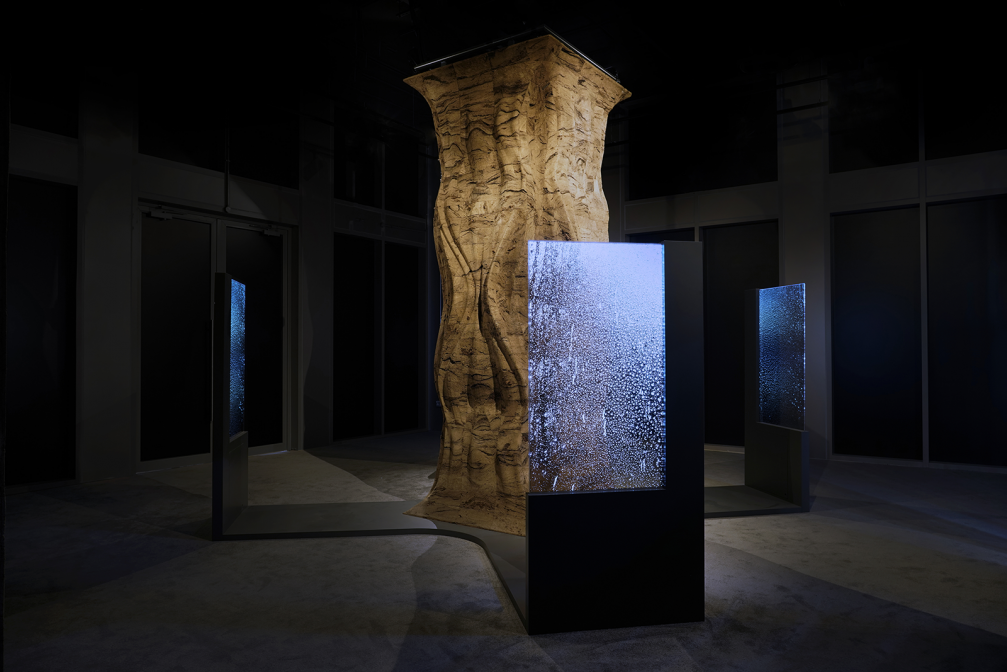
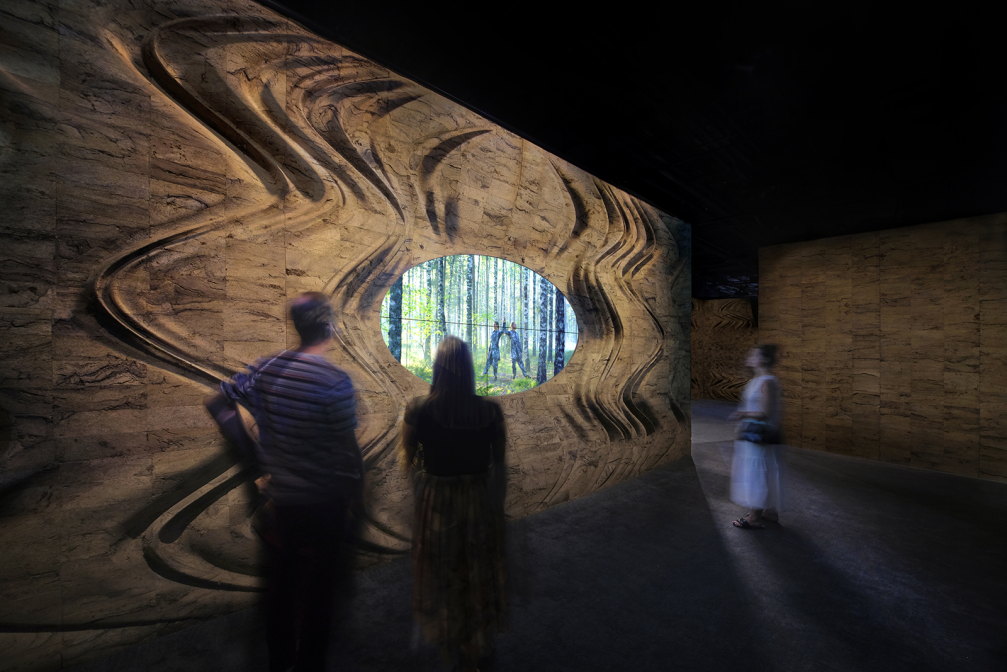
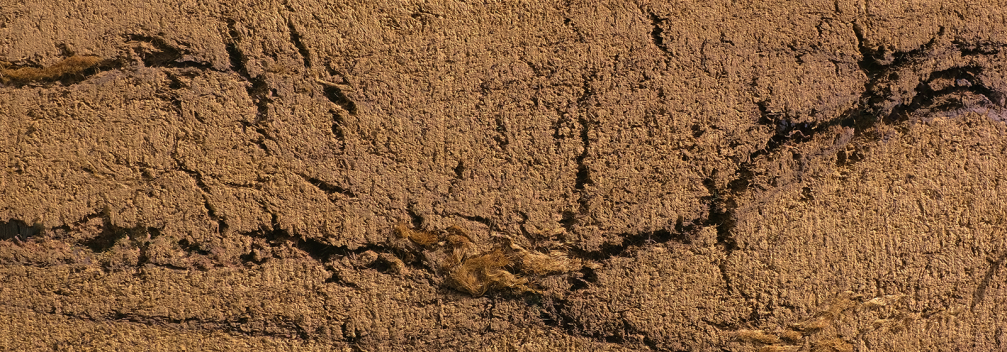
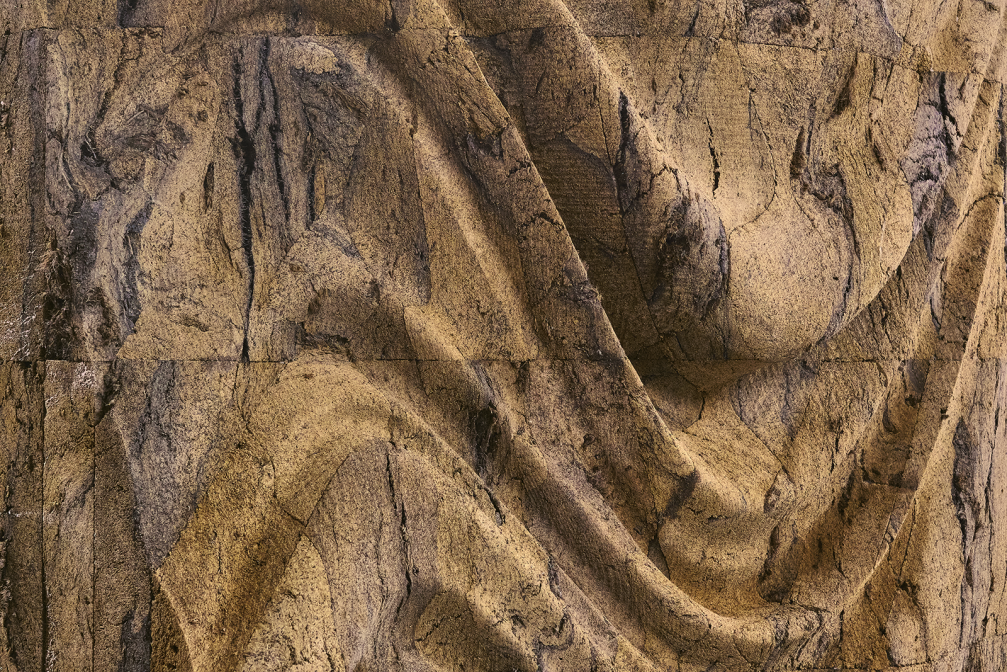
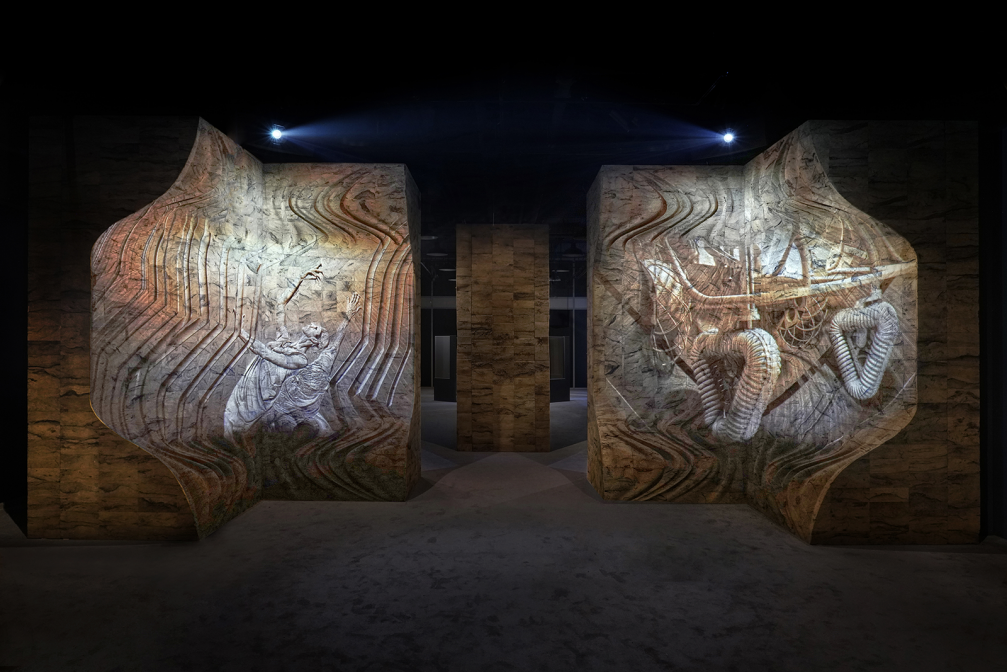
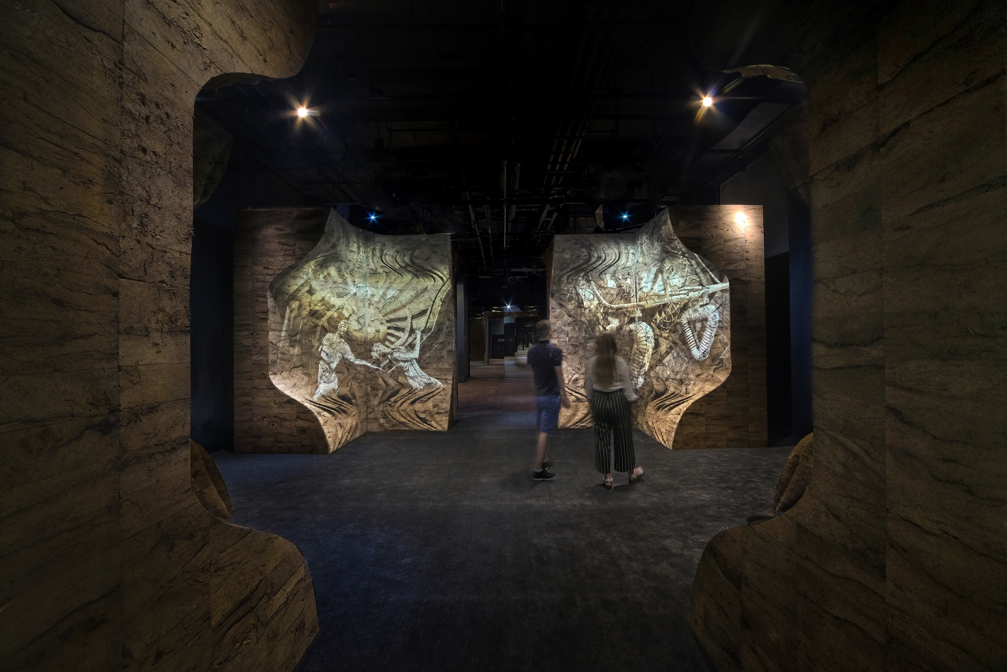
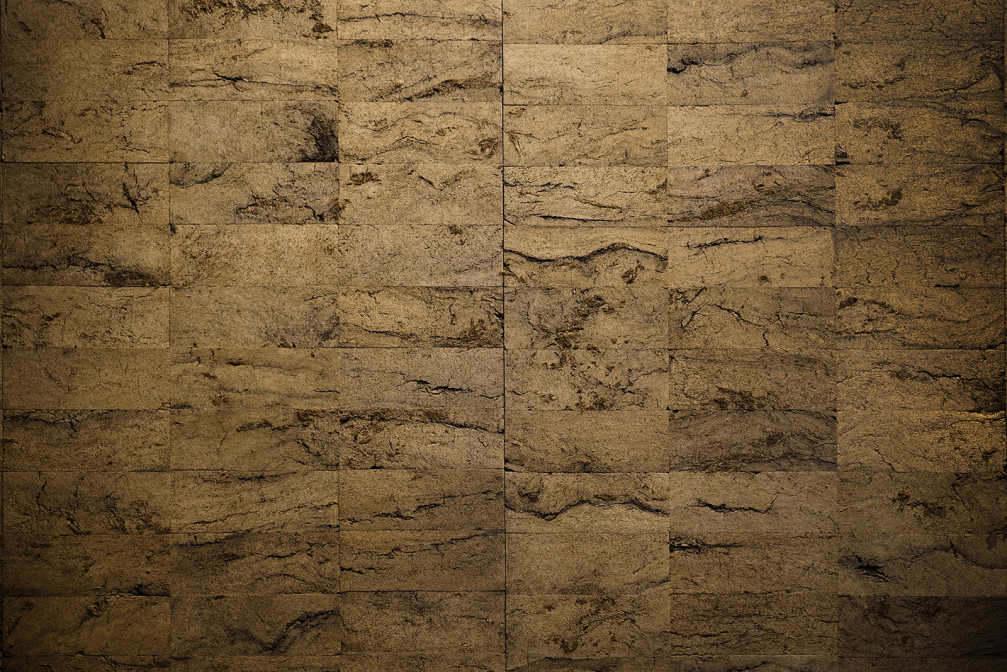
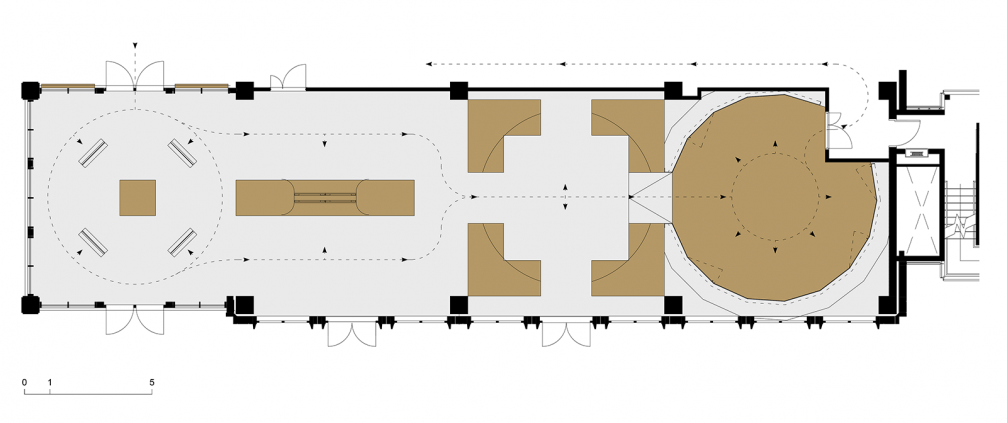
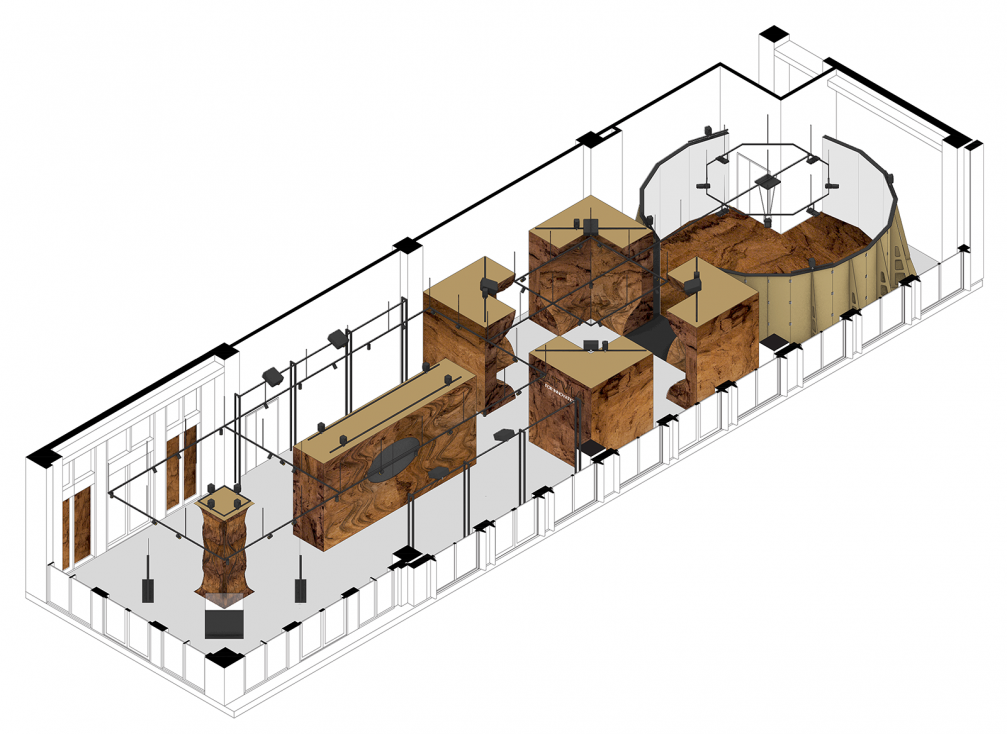
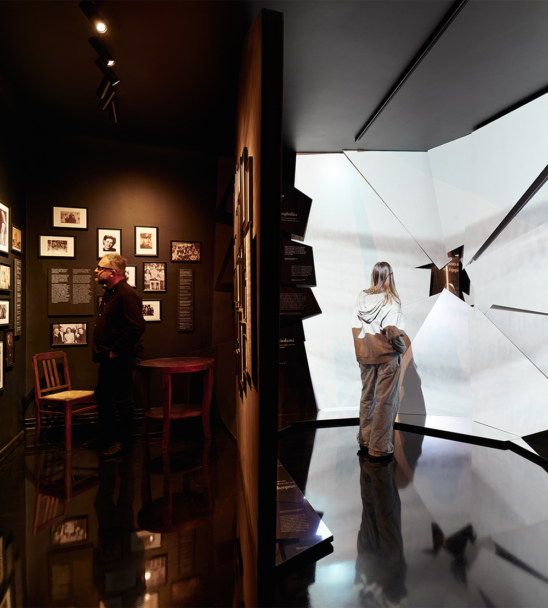
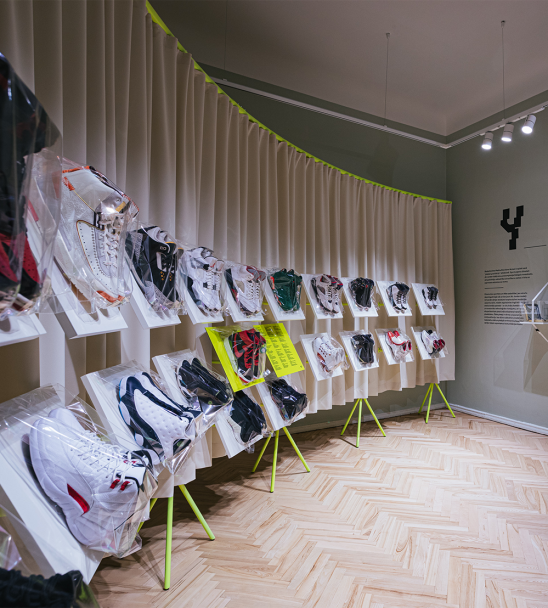
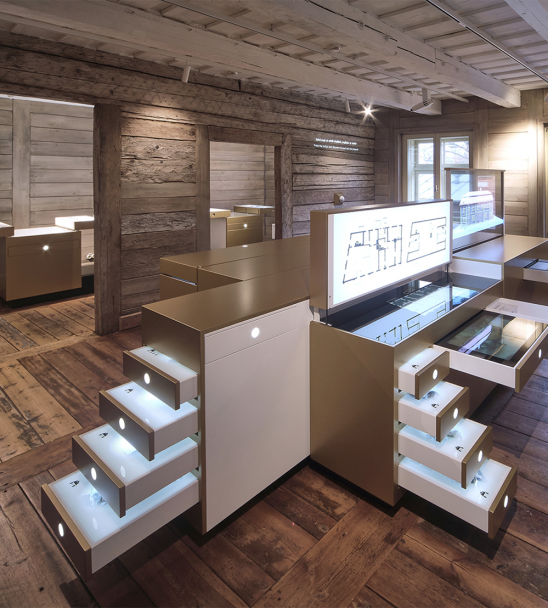
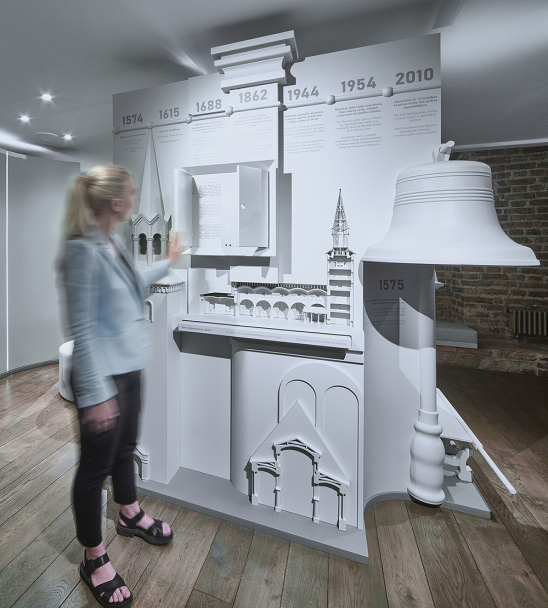
Viedokļi